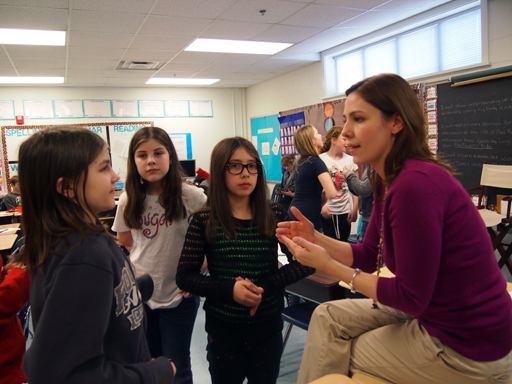
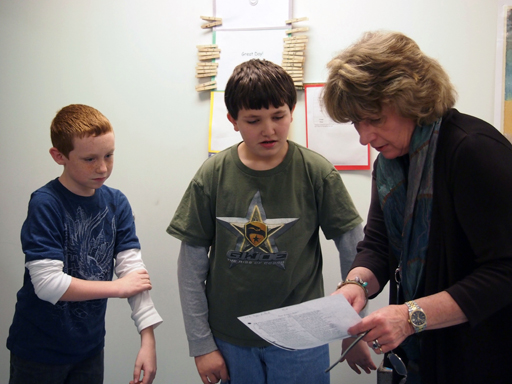
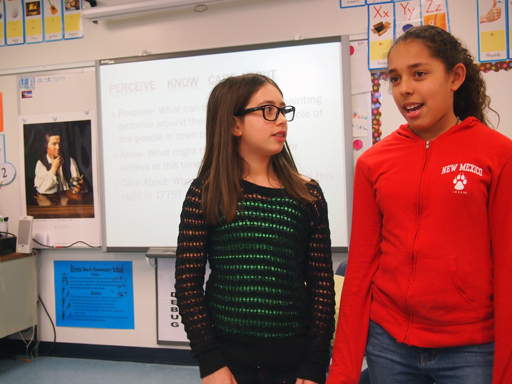
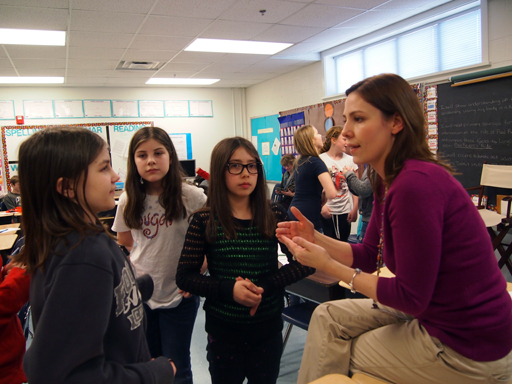
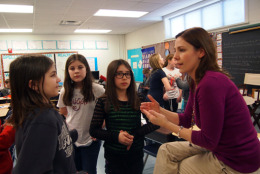
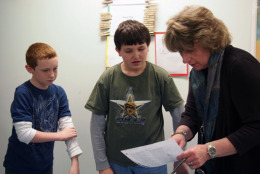
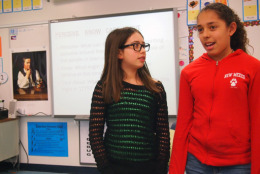
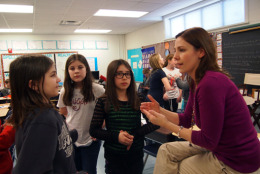
By YAGANA SHAH
Capital News Service
PASADENA, Md. – Imagine a classroom where math is taught with Matisse and reading is learned through drama rather than a textbook.
“Arts integration strategy gets students to work with creativity. It gives them a chance to work with critical thinking,” said Suzanne Owens, a visual arts coordinator in Anne Arundel County Public Schools, where this fusion of arts and common core objectives gives students a more enriching experience and lasting learning.
Arts integration came to the county in 2007 through a U.S. Department of Education Arts in Education-Model Development and Dissemination grant. Wiley H. Bates Middle School in Annapolis first piloted the program and now seven more schools have followed suit with great success, educators say.
“We have received a tremendous response from teachers, in that it makes them revitalized. It allows them to go back to the craft of teaching. It allows them to be creative in the classroom with students and provides them with energy because they’re watching their kids be successful,” said Susan Riley, curriculum innovation and resource development specialist.
Educators feel that by intertwining arts from theatre, music, visual arts and dance across common core lessons, they are activating a part of students’ minds that otherwise may not be engaged.
For Amber Foster, a fifth-grade teacher at Riviera Beach Elementary School in Pasadena, that means getting students out of their seats and interacting with one another.
Foster relies not only on a textbook, but on poetry and a painting to teach the story of patriot Paul Revere’s midnight ride before the Revolutionary War battles of Lexington and Concord. She points to Grant Wood’s painting, “The Midnight Ride of Paul Revere,” one Thursday afternoon and asks students a three-part question: How do the townspeople feel on this night? What do these people know or believe? What do they care about?
Answers to questions like these that show Foster her students are thinking critically. “I’m really activating a lot of their thinking skills…I don’t want them sitting in their seats two hours straight reading out of a book,” Foster said.
The students then read Henry Wadsworth Longfellow’s famed poem, “Paul Revere’s Ride” and perform skits enacting the midnight ride, while Foster reminds them to work on locomotion and facial expressions.
Exercises like this help students make inferences, which might otherwise be difficult for them to do, Foster said. It is much easier to keep students’ interest and transition to text-based learning, once she can get them thinking artfully.
“Arts integration not only increases knowledge, it increases skills. It’s a huge method to increase student engagement and performance,” Foster said.
Her classroom consists of visual learners, shy students and also energetic participants. Arts integration is a way to reach them all.
“I have students who will not talk in class, but when I do visual arts or drama, they participate so I can get a glimpse into what they’re learning,” Foster said. “I have kids who need to move or need to see something in a visual way first. So for those students who, in a traditional classroom, may be left behind, here they are right there with everyone else, if not succeeding more.”
Next door in Chris Graulich’s fifth-grade classroom, students learn math concepts through artwork by looking for parallel lines and angles. It’s much easier for these concepts to sink in with students when they can visualize them, Graulich said.
“Using artful thinking gets them thinking…whether it’s a drawing or acting, whatever trigger we used in class gives them a stronger grasp,” he said. It also helps with recollection, Graulich said.
Researchers at Johns Hopkins University have found the benefit of arts integration may extend beyond just recollection. It may improve retention.
Preliminary results of a yet-to-be published randomized trial have shown promising results, said Mariale Hardiman, director of the Neuro-Education Initiative in the Johns Hopkins University School of Education.
The study was carried out across four fifth-grade classrooms in a Baltimore City School over six months.
“At post-study testing we found that students equally learned the same amount of information,” Hardiman said. “We probably thought that would be the case. However, 12 weeks later, the kids who had learned it through the arts remembered it better.”
Manipulating an art form is a more memorable form of learning than just sitting down with a pencil and paper, she said, which allows for greater retention.
Hardiman’s study has also shown that arts integration can be helpful to teachers who are having difficulty engaging their students. Student engagement scores went up for weaker teachers who applied arts integration, making them comparable to their stronger peers.
Teachers often feel pressed for time when integrating arts, but integration doesn’t need to be elaborate to work. The process of embedding arts into instruction is what counts.
Hardiman formerly served as principal at Roland Park Elementary and Middle School in Baltimore where she introduced arts integration, so she is familiar with its challenges.
“If you want to embed the arts, it takes a bit of thinking and creativity on your part,” Hardiman said.
Some arts integration teachers in Anne Arundel County are working toward arts integration certification through Towson University. For other teachers, training is provided and resources are available, including lesson plan ideas.
But Hardiman stresses it’s important that teachers don’t mistake any craft activity as art integration. Integration must deliver subject content.
“All arts activities aren’t arts integration. It’s in how the activity delivers content. If it does, you’re good to go. It can be very simple.”







